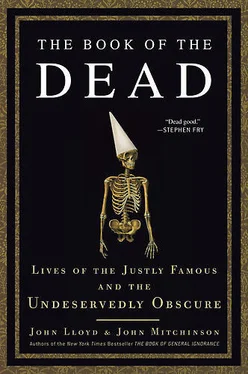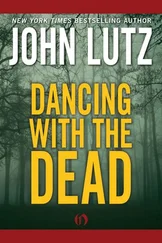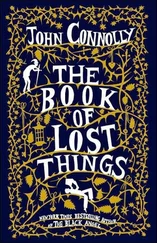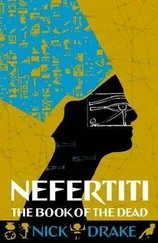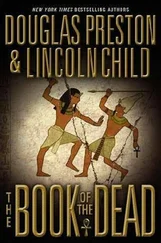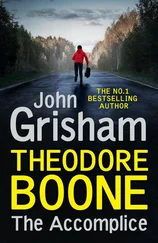As he got older, his eccentricities multiplied. He kept two walking sticks, Dapple and Dobbin. On meeting friends he would use one or other of these to tap them on the shoulders, in mock knighthoods. He also had a “sacred teapot” called Dickey, which he referred to as a pet. His (real) pet pig allegedly shared his bed for a time, and he was also fond of cats, in particular a tomcat called Langhorne that he referred to as “Sir John” for several years, before redesignating him a vicar to be addressed as “The Reverend John Langhorne.” His collection of mice ran wild in his office, destroying manuscripts and terrifying guests. “I love anything with four legs!” he proclaimed. Bentham’s house had once belonged to John Milton, to whom he erected a plaque in the garden calling him the Prince of Poets, though he personally found poetry a “misapplication of time.” “Prose,” he said, “is when all the lines except the last go on to the margin. Poetry is when some of them fall short of it.” It’s hard to know whether he was employing the same dry wit when he wrote to the London City Council asking if he could replace the shrubs beside his driveway with mummified corpses, which he said would be “more aesthetic than flowers.” This idea was developed further in his book Auto-Icon; or Farther Uses of the Dead to the Living , in which he proposed the wholesale transformation of corpses into varnished garden ornaments. On the basis that this suggestion was unlikely to enhance his reputation, his literary executors delayed its publication until a decade after his death.
Bentham liked a joke, but his writing on the Auto-Icon can’t simply be dismissed as either a prank or the onset of dementia. His value as a philosopher was in his unswerving application of the principle of utility. Death, then as now, was a taboo, steeped in fear and religious superstition. Burying corpses and letting them rot in the ground seemed to him wasteful, repugnant, and unhygienic. Graveyards had been fearful places to him since childhood. He recalled going through one at night, his heart “going pit-a-pat all the while, and I fancied I saw a ghost perched on every tombstone.” The Auto-Icon solved both problems at once. It made death useful, offering the safe disposal of corpses, while providing a permanent memorial to the dead person. Bentham’s own Auto-Icon at University College is the perfect Enlightenment object, a triumph for rationalism, materialism, and utilitarianism, and a rejection of fear, superstition, and the tyranny of the Church. The fact that it is also very odd and faintly off-putting somehow seems entirely in character with its inventor:
Twenty years after I am dead, I shall be a despot, sitting in my chair with Dapple in my hand, and wearing one of the coats I wear now.
Bentham’s publicly displayed three-dimensional version of the afterlife might not shine with the mystic intensity of Blake’s, but starting from opposite ends of the spiritual spectrum, they both ended in the same place. Both had faith in the power of their own imaginations. Both used their imaginations to release themselves from the old myths of heaven and hell that had so tormented Ann Lee, and in the process, both made themselves feel a lot happier about dying.

Practical philosophy and mystical visions come together neatly in the life of the American architect, inventor, poet, philosopher, author, teacher, entrepreneur, artist, and mathematician, Richard Buckminster Fuller(1895–1983). He was also preoccupied with salvation, both individual and collective. “We are not going to be able to operate our Spaceship Earth successfully, nor for much longer, unless we see it as a whole spaceship and our fate as common. It has to be everybody or nobody,” he wrote in 1969. Like each of the other lives in this chapter, his story is about having a vision and trusting it. “Faith,” he once remarked “is much better than belief. Belief is when someone else does the thinking.”
The Fullers had always done their own thinking. They were New England nonconformists known as Transcendentalists, who rejected religious authority in favor of personal inspiration. Like Blake, the Transcendentalists saw both humanity and nature as manifestations of the Divine. They included among their number the philosopher Ralph Waldo Emerson (1803–82), the nature writer Henry David Thoreau (1817–62), and Fuller’s great-aunt, Margaret Fuller (1810–50), author of Woman in the Nineteenth Century (1845), the first major feminist work in the United States.
The young “Bucky,” as he was called, was extremely shortsighted. Until he was fitted with glasses, he refused to believe that the world was not blurry. His father, like so many of the fathers in this book, died at a young age, but his family was well established and wealthy, and so, like four generations of his family before him, Bucky was sent to Harvard. It was there that his long battle with authority began. Halfway through his first year he withdrew his entire college allowance from the bank to romance a Manhattan chorus girl and was promptly expelled. He was readmitted the next year and thrown out a second time for “irresponsibility and lack of interest.” He would later write:
What usually happens in the educational process is that the faculties are dulled, overloaded, stuffed and paralyzed so that by the time most people are mature they have lost their innate capabilities.
In the end, the man who was to become the greatest architect of his age didn’t graduate. The only degrees he ever received were the forty-seven honorary doctorates he was awarded many years later.
After brief stints in a textile mill and a meat-packing company, Fuller joined the navy during World War I. As a boy in Maine he had amused himself by making tools out of odds and ends, and he put this talent to good use by inventing a winchlike device for rescuing the pilots of navy airplanes, who often ended up head down underwater. Thanks to this, he was selected for officer training at the U.S. Naval Academy, where he studied engineering. Leaving the navy to marry his wife, Anne, in 1917, he started a business with her father making bricks out of wood shavings, his first environmentally aware project. Both the marriage and the business were very successful until 1922, when the Fullers’ four-year-old daughter, Alexandra, suddenly died from polio.
This affected Fuller terribly. He was devoted to her, and he and Anne had already nursed her through the 1918 flu epidemic and a serious bout of meningitis. The day before she died she had asked him for a walking cane similar to the one he had used since he had damaged his knee playing football. He then left the family home on Long Island for an overnight trip to watch Harvard, his old college team, play. When Harvard won, Fuller spent the night carousing with his friends. By the time he rang Anne the following afternoon, Alexandra had fallen into a coma. He rushed back home, and when he arrived, she regained consciousness just long enough to ask if he had got the cane. He had forgotten all about it, and Alexandra died shortly afterward. Fuller was inconsolable, and his life began to fall apart. He started drinking heavily and neglecting the business. Eventually Anne’s father lost patience, bought him out, and then sold the company for a fraction of its potential value. Fuller began an intense affair with a teenage girl. When she ended it, his mental health deteriorated sharply. In 1927, aged thirty-two, he walked to Lake Michigan and stood at the water’s edge, contemplating suicide.
At that moment, Richard Buckminster Fuller found himself suspended several feet above the ground, surrounded by sparkling lights. Time seemed to pause and he heard a voice say:
Читать дальше
